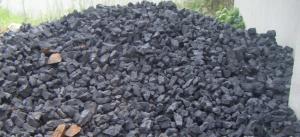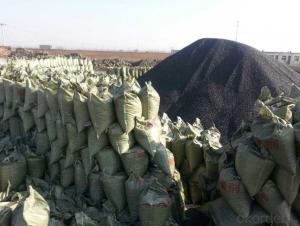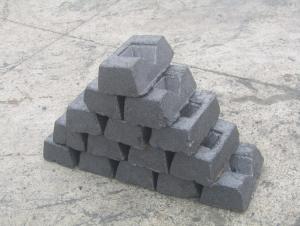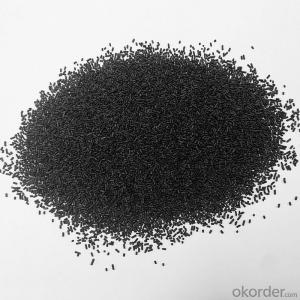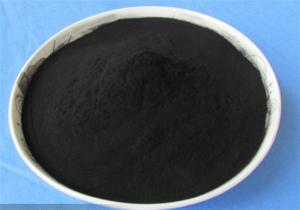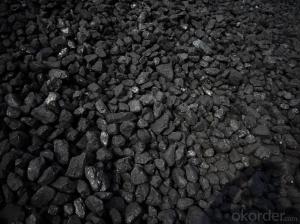Coal Based-granular Activated cCarbon for wWater Purification
- Loading Port:
- Tianjin
- Payment Terms:
- TT OR LC
- Min Order Qty:
- 1000 m.t.
- Supply Capability:
- 5000 m.t./month
OKorder Service Pledge
OKorder Financial Service
You Might Also Like
1.Structure of Anthracite Description
Anthracite is made from Shanxi,the coal capital of the word .The quality is very high due to its unique resource .It has been exported to most of the world ,especially to Japan and Korea,as well as mid east.
It is commonly used in drinking water ,food industry ,chemical /dyeing industry ,sea/salt water filtration ,petro-chemical industry ,pulp/paper industry ,sauna,spa,pool,boiler ,etc.
Advantages:
1. Longer Filter Runs2. Faster Filtration3. Long Lifetime4. Good Separation Characteristics5. Savings water and power in washing6.Removes more iron and manganese salts tration ,petrochemical industry ,pulp /paper industry ,sauna,spa,pool,boiler,etc.
2. Main Features of Anthracite
Fixed Carbon: 78 %
Ash: 18 %
Volatile Matter: 4 %
Sulphur: 1.0 %
Moisture: 11 %
Gross Calorific Value: 6450 Kcal
Size: 0 mm - 19 mm: 90%
3. The Images of Anthracite
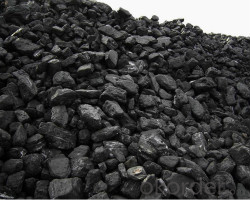
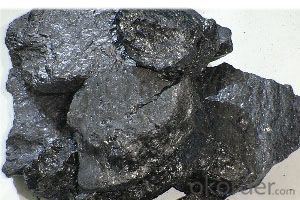
4. The Specification of Anthracite
1. Fixed carbon: 90%min
2.Uniform particles
3.Good separation characteristics
4. Long life
5. Widely used
6.activated anthracite:
7.Certificate: ISO9001, ISO9002, NSF
8.Usage: for water and air purification, etc.
5.FAQ of Anthracite
1). Q: Are you a factory or trading company?
A: We are a factory.
2). Q: Where is your factory located? How can I visit there?
A: Our factory is located in ShanXi, HeNan, China. You are warmly welcomed to visit us!
3). Q: How can I get some samples?
A: Please connect me for samples
4). Q: Can the price be cheaper?
A: Of course, you will be offered a good discount for big amount.
- Q: What can light hydrocarbon carbon five be packed with?
- Light hydrocarbon carbon fiveLight hydrocarbon carbon five is a light yellow or colorless transparent flammable liquid with a density of 0.60-0.68 and a boiling point of 36.1 degrees. The calorific value of liquid light hydrocarbons is 10800kcal/kg. (the current price in Chengdu is 2000 yuan / ton, and the monthly supply is about 1000 tons.).
- Q: How does carbon affect the formation of acidification in lakes?
- Carbon dioxide (CO2) dissolved in water forms carbonic acid (H2CO3), which lowers the pH level of the water. This acidic environment can lead to acidification in lakes and other bodies of water.
- Q: How are carbon compounds classified?
- Carbon compounds are classified based on their structural arrangement, functional groups, and the type of bonds they form with other elements.
- Q: What is carbon steel, carbon manganese steel?
- Compared with other kinds of steel, carbon steel is the earliest, low cost, wide performance range and the largest amount. For nominal pressure PN is less than or equal to 32.0MPa, temperature of -30-425 water, steam, air, hydrogen, ammonia, nitrogen and petroleum products such as medium. Commonly used grades are WC1, WCB, ZG25 and high quality steel 20, 25, 30 and low-alloy structural steel 16Mn
- Q: Why use carbon batteries for alarm clocks?
- You said carbon battery is called alkaline battery his standard voltage is 1.5V the charging the battery is generally 1.2V. to this problem is not a reward.
- Q: What's the difference between coal and carbon?
- Coal has a certain luster, which contains a certain mineral oil, etc., is a relatively tight crystal structure. After baking coal coke, coal tar removal became less organized a lot of voids in carbon, most of which are carbon elements. Carbon produced by coal; also called coke. In addition, wood charcoal is also called charcoal.Coal and carbon can all be used as fuel. Most coal burns with smoke and may smell. Carbon burning generally does not have too much smoke, but also less odor.Carbon gap structure makes carbon have good adsorption, so carbon is often used as adsorbent material, used for adsorption of water, odor and so on.
- Q: How does carbon contribute to the strength of alloys?
- Carbon contributes to the strength of alloys by forming interstitial solid solutions with metals, which increases the hardness and strength of the material. The carbon atoms occupy the spaces between the metal atoms, creating lattice distortions and enhancing the overall strength of the alloy. Additionally, carbon can also form compounds with metals, such as carbides, which further improve the hardness and wear resistance of alloys.
- Q: What are the impacts of carbon emissions on the stability of coral reefs?
- Carbon emissions have significant impacts on the stability of coral reefs. Increased carbon dioxide levels in the atmosphere lead to ocean acidification, which hinders coral reef growth and weakens their structural integrity. Additionally, rising sea temperatures due to carbon emissions result in coral bleaching, where corals expel the symbiotic algae they depend on for survival. These combined effects make coral reefs more susceptible to disease outbreaks, slow recovery from disturbances, and ultimately increases the risk of their collapse, posing a significant threat to marine biodiversity and coastal communities that rely on them.
- Q: How can carbon capture and storage help reduce greenhouse gas emissions?
- CCS has the potential to make a significant contribution in the fight against greenhouse gas emissions. Its core process involves capturing carbon dioxide emitted from industrial activities or power generation, transporting it, and then underground storage in geological formations. To begin with, CCS can effectively reduce greenhouse gas emissions by capturing CO2 directly from major sources like power plants and industrial facilities. Without CCS, these sources would release CO2 into the atmosphere, exacerbating the greenhouse effect and further contributing to climate change. By capturing and storing this CO2, the negative impact on climate change is mitigated. Additionally, CCS allows for the continued use of fossil fuels, such as coal or natural gas, in a more environmentally friendly manner. These fuels are currently the main sources of energy for electricity generation and industrial processes. By implementing CCS, the emissions of CO2 from these fossil fuel activities can be significantly reduced, facilitating a gradual and economically feasible transition to cleaner energy sources. Moreover, the combination of CCS with bioenergy production creates a process known as BECCS. This involves using biomass, like crop residues or energy crops, to produce energy. The CO2 emitted during this bioenergy production is captured and stored, resulting in a net-negative emissions process. BECCS effectively removes CO2 from the atmosphere, offsetting emissions from other sectors. Lastly, CCS can play a crucial role in the decarbonization of hard-to-abate sectors, such as cement and steel production, where low-carbon alternatives are currently limited. By capturing and storing CO2 emissions from these sectors, CCS significantly reduces their overall greenhouse gas emissions and supports their transition towards more sustainable practices. In conclusion, the implementation of carbon capture and storage technology is essential in reducing greenhouse gas emissions. It directly captures and stores CO2 from major sources, allows for the sustainable use of fossil fuels, enables negative emissions through BECCS, and aids the decarbonization of challenging sectors. By incorporating CCS alongside other mitigation strategies, global climate goals can be achieved, and the battle against climate change can be fought effectively.
- Q: What are the different colors of carbon-based gemstones?
- The different colors of carbon-based gemstones include white, yellow, brown, black, and the rare blue and pink diamonds.
Send your message to us
Coal Based-granular Activated cCarbon for wWater Purification
- Loading Port:
- Tianjin
- Payment Terms:
- TT OR LC
- Min Order Qty:
- 1000 m.t.
- Supply Capability:
- 5000 m.t./month
OKorder Service Pledge
OKorder Financial Service
Similar products
Hot products
Hot Searches
Related keywords
